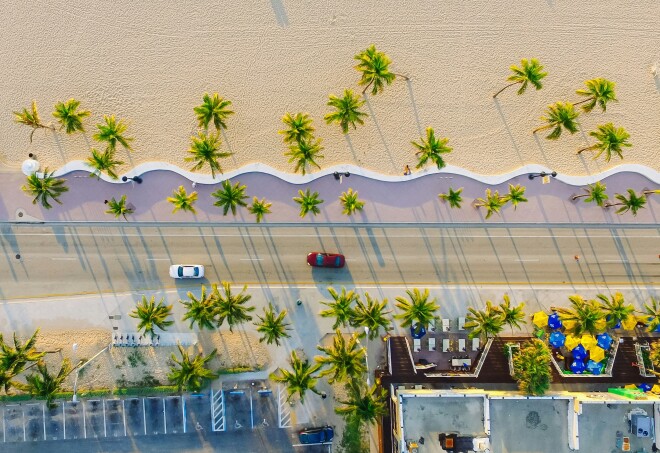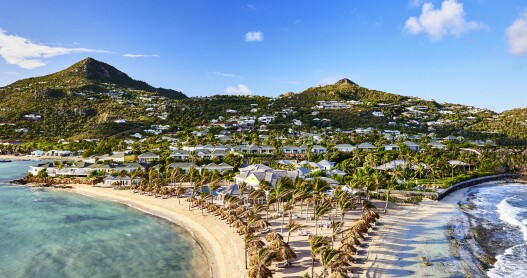Overview
When’s the best time to go to Puerto Rico?
The best time to visit Puerto Rico depends on your island agenda. The “tourist” season is fall/winter (end of October through April) when waves on the west coast beckon to surfers and the tropical rain forests come to life. The beaches will be more crowded, but all the shops, restaurants, bars, and hotels are in full swing. Everything the island has to offer is at your fingertips. Summer is also a great time if you would like to just relax without all the nightlife and day trips. If you want the beach to yourself—plus a few vacationing Puerto Ricans—then head down between May and August for seclusion, but be aware these are also the hottest months of the year.
How to get around Puerto Rico
You have two options for travel to the island—airplane or cruise ship. The cruise ships stop at San Juan, a must-see city destination (though to really experience the island, you must travel beyond the capital). SJU is the biggest and most modern airport in the Caribbean. From the East Coast of the U.S. mainland, try JetBlue, Spirit, or Southwest. From everywhere else, there is Delta, American, or United. A perk for U.S. citizens: This is a passport-free destination.
For daytime travel, public transit services exist within individual cities, but they are limited. Taxis are clean and reliable—look for white cabs with Taxi Turístico on the front doors. The shared cab (public) system goes around the island for a small fare, but it takes a long time due to the numerous stops along the way. Rideshares like Uber are available in various towns, especially those close to the metropolitan region.
Most travelers rent a car for the duration of their stay. The currency is U.S. dollars, and the road system resembles that of the mainland. There are two exceptions: Distances are measured in kilometers, while speed is measured in miles per hour. Additionally, gas is represented in liters, and prices are competitive with those on the mainland. One roadway custom worth mentioning is that police and ambulances drive with their lights flashing. Still, unless they also blast their sirens, there’s no need to pull over or move aside.
Can’t miss things to do in Puerto Rico
Visit the Cueva Ventana cave in Arecibo. A short trail takes you through two natural caves, climbing down under the roots of a tree and opening up to the mouth of another cave that expands to show you a picturesque view of the center of the island. It’s breathtaking.
Another must-see place is El Yunque National Forest, the only subtropical rain forest in the U.S. Forest Service. Become one with nature as you wander through the walking trails and explore the mesmerizing waterfalls, as well as the endemic flora and fauna.
You can’t leave the island without experiencing the enchantment of a bioluminescent bay. There are only five in the world, and Puerto Rico is home to three—including the brightest one: Mosquito Bay in Vieques. Kayak through the glow-in-the-dark, shimmery water for a magical, one-of-a-kind adventure.
Food and drink to try in Puerto Rico
Local cuisine is available on every corner, along every major road, and at all places in between. This is the best island for people who are always hungry—there is something to eat, everywhere! Puerto Rican cuisine is varied but full of staple, hearty dishes. The most famous one is mofongo, made of deep-fried mashed plantains and served with a side of seafood or meat. And of course, you can always accompany any dish with a side of abuelita’s-style rice and beans.
Pinchos and empanadillas are roadside favorites, and it’s easy to tell which spots the locals love because the lines will be long and the stands sell out early. It’s worth trying a few during your stay, as each place will have its spin on a classic dish. You can also find Thai, sushi, continental, Mexican, Indian, German, and Italian cuisine in various cities around the island.
Culture in Puerto Rico
The island was called “Borinquén” before the Spanish arrived; they changed the name to Puerto Rico. (The burial ground of the Spanish conquistador and first governor Juan Ponce de León is said to be in San Juan.) You might hear native-born Puerto Ricans refer to themselves as “Boricua,” derived from the original island name. The indigenous Taíno people were present when the Spanish came, and Africans were brought to the island by the conquistadores. The mix of these three cultures gave way to a new identity: Puerto Ricans. There are Puerto Ricans alive now who are distant relatives of the original islanders. You can still find well-preserved pictographs of Taíno artwork in caves and rocks and visit towns like Loíza, which preserve the African heritage today
Local festivals are worth attending to give you an authentic taste of Puerto Rican customs and lifestyle. If you’re interested in food, visit the National Plantain Festival in Corozal (October), Saborea Puerto Rico at Escambrón Beach (May), and the Coffee and Chocolate Expo in San Juan (September). For culture, try the Hatillo Masks Festival in Hatillo (December) or the Rincon International Film Festival, Puerto Rico’s largest film festival (April). And for the biggest street party of the year, come experience the Fiestas de la Calle San Sebastián in San Juan, commonly referred to as “la SanSe, ” celebrating St. Sebastian, in January. To find more festivals, just ask the locals. Puerto Ricans always know where to find the party.
Local travel tips for Puerto Rico
While GPS systems work fine on the island, the perfect navigation set for any local is . . . the Puerto Rican GPS. Stop anywhere in town and ask any local for directions, but it’s best to speak in Spanish.












